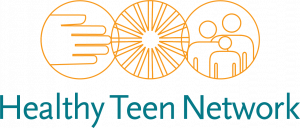This training helps sex education instructors ensure they are using best practices when it comes to setting the tone for discussions, answering questions, preventing challenging situations, and managing them effectively if they do occur.
Training Hub
The Sex Education Collaborative Training Hub lists trainings for sex educators, facilitators, and other professionals on best practices for sharing important information with clients and the public. From teaching anatomy inclusively to effectively addressing bias in the classroom to addressing racial justice and equity in sex education, the Training Hub includes trainings, technical assistance, and policy support from state, regional, and national leaders in the field of sex education.
Please note: The Training Hub includes both in-person and online professional trainings. If you see a training you are interested in and it isn’t listed as virtual, please reach out directly to any of our members to find out what's possible!
Trainings Offered by State-Based and National Organizations
Displaying results 111 - 115 of 137Creating a Comfortable Climate
- Indicator 1 (K-12): Demonstrate three techniques to create an inclusive and affirming learning environment. (S)
- Indicator 2 (K-12): Demonstrate three strategies for creating culturally responsive classrooms. (S)
- Indicator 3 (K-12): Describe three elements of a trauma-informed approach to sex education.
- Indicator 4 (K-12): Demonstrate three strategies of a trauma-informed approach to sex education (e.g. giving trigger warnings before content on sexual assault and allowing students the right to pass as appropriate, etc.). (S)
- Indicator 1 (K-12): Describe the importance of teachers’ maintaining professional boundaries when teaching sex education.
- Indicator 2 (K-12): List three factors to consider regarding personal disclosure when teaching sex education
- Indicator 4 (K-12): Explain the roles and responsibilities of a mandated reporter.
- Indicator 1 (K-12): Explain three reasons why it is important to respond to every question students ask when teaching sex education.
- Indicator 1 (K-12): Describe three health (e.g. physical, social and/or emotional) and/or academic benefits of sex education for young people
- Indicator 2 (K-12): Describe state and/or district laws, policies, and standards that relate to sex education where one teaches.
- Indicator 1 (K-12): Explain the differences between personal and universal values relating to sexuality.
- Indicator 2 (K-12): Describe how verbal and nonverbal expression of personal values, and comfort with topics related to sex education, could impact one’s teaching
- Indicator 3 (K-12): Explain the importance of educators refraining from sharing their personal values when implementing sex education.
- Indicator 4 (K-12): Demonstrate the ability to respond effectively to students’ values-based comments and questions. (S)
LGBTQ+ Inclusivity
In this training, participants will:
- Describe the ways in which discrimination in the school setting can lend to unfavorable health outcomes for LGBTQ+ youth.
- Identify concrete steps to respond to bullying on the basis of gender or sexual orientation.
- Describe specific strategies for being inclusive of LGBTQ+ youth in the classroom and school setting.
- Indicator 1 (K-12): Demonstrate three techniques to create an inclusive and affirming learning environment. (S)
- Indicator 3 (K-12): Describe three elements of a trauma-informed approach to sex education.
- Indicator 1 (K-12): Explain how availability of supportive school staff, presence of Gay-Straight Alliances (GSAs), LGBQ-inclusive curricular resources, and the presence of comprehensive, enumerated anti-harassment school policies are related to improved school climate for students of all sexual orientations.
- Indicator 4 (K-12): Demonstrate the use of inclusive and affirming language. (S)
- Indicator 5 (K-12): Demonstrate the ability to intervene effectively in homophobic and other bullying comments and actions. (S)
- Indicator 6 (K-12): Explain three ways that LGBQ+ youth are at disproportionate risk for health disparities.
- Indicator 7 (K-12): Identify three credible, medically accurate, youth-friendly resources that can provide information or support related to sexual orientation.
- Indicator 8 (K-12): Explain why it is essential to include positive portrayals of LGBQ+ people in lessons.
- Indicator 9 (K-12): Demonstrate three strategies that can be used to include positive portrayals of LGBQ+ people in lessons. (S)
- Indicator 1 (K-12): Describe three health (e.g. physical, social and/or emotional) and/or academic benefits of sex education for young people
Virtual PD - Increasing Personal Comfort When Teaching Sex Ed
Virtual Professional Development is a simulated classroom where teachers can practice teaching student avatars using short scenarios and support from an instructional coach, so they can quickly learn and master the skills they most need to be effective. With upper elementary, middle and high school classrooms, Virtual PD has scenarios for teachers of all grade levels across a wide range of topics aligned with the Professional Learning Standards for Sex Education (PLSSE). You can watch the video here to learn more about Virtual PD.
Using the Virtual Professional Development simulated classroom, the educator will practice Increasing Personal Comfort When Teaching Sex Ed with the student avatars. In this VPD scenario, the participant will conduct an activity about the physical changes of puberty with an established classroom community. In this simulation with the five students, the educator will ask students to engage in a think-pair-share activity to brainstorm three physical changes of puberty and then have both small groups report back. The participant will need to demonstrate personal comfort when leading this discussion with students.
- Indicator 1 (K-12): Demonstrate the ability to build rapport with students. (S)
Working with LGBTQ Youth
This workshop will teach participants about the fundamentals of sexual orientation, gender identity, and how to ensure that all young people and their families feel welcome and included in our classrooms and programs. The first part of the workshop will provide basic information about sexual orientation and gender identity, as well as dispel common myths. The second part of the workshop will focus on ways to create safe learning environments for students who are lesbian, gay, bisexual, and/or transgender (LGBT) or whose family members might be. It will also provide concrete lessons for teaching LGBT issues directly to young people. This workshop can be tailored to meet the specific needs of your group, school, or agency. All content is aligned with the National Sexuality Education Standards, National Teacher Preparation Standards for Sexuality Education, and the Professional Learning Standards for Sex Education
- Indicator 1 (K-12): Demonstrate three techniques to create an inclusive and affirming learning environment. (S)
- Indicator 7 (K-12): Demonstrate the ability to analyze and tailor lesson plans to match the age, developmental stages, cultural backgrounds, and other identities of students. (S)
- Indicator 1 (K-12): Explain how availability of supportive school staff, presence of Gay-Straight Alliances (GSAs), LGBQ-inclusive curricular resources, and the presence of comprehensive, enumerated anti-harassment school policies are related to improved school climate for students of all sexual orientations.
- Indicator 2 (K-12): Define sexual orientation and sexual identity, including that everyone has both.
- Indicator 3 (6-12): Explain the difference between sexual orientation, sexual behavior, and sexual identity.
- Indicator 4 (K-12): Demonstrate the use of inclusive and affirming language. (S)
- Indicator 5 (K-12): Demonstrate the ability to intervene effectively in homophobic and other bullying comments and actions. (S)
- Indicator 6 (K-12): Explain three ways that LGBQ+ youth are at disproportionate risk for health disparities.
- Indicator 7 (K-12): Identify three credible, medically accurate, youth-friendly resources that can provide information or support related to sexual orientation.
- Indicator 2 (K-12): Demonstrate the use of inclusive and affirming language. (S)
- Indicator 3 (K-12): Define gender identity and sex assigned at birth.
- Indicator 4 (K-12): Explain how gender identity and gender expression are distinct from each other and from sexual orientation.
- Indicator 5 (K-12): Demonstrate the ability to intervene effectively in transphobic, sexist, misogynistic and other gender-related bullying comments and actions. (S)
- Indicator 7 (K-12): Identify three credible, medically accurate, youth-friendly resources that can provide information or support related to transgender and gender expansive people.
Managing Sensitive Issues: Effectively Responding to Controversy
Educators and others who work with youth often feel anxious about addressing sensitive issues—such as topics associated with strong personal values—in the classroom, whether they are part of a curriculum or surface in a general class discussion. Sexuality, alcohol and other drugs, politics, race, and bullying are just a few examples of issues that, if not handled sensitively, could result in alienated students or angry parents contacting the school or agency. The most common topic targeted in this training is sexuality education, but the focus can be adjusted based on participants' needs. Participants identify the sensitive topics they face in their workplace and have the opportunity to assess their personal values, consider student diversity, and build the skills needed to answer difficult questions. The facilitator shares a set of proven strategies for responding to questions related to sensitive topics and harassing/bullying statements, and participants practice effective responses to build their skills.
Objectives of this course:
- Identify a range of personal and community-based values.
- Explore a set of effective facilitation techniques for addressing difficult issues.
- Practice using the techniques to effectively answer a variety of difficult questions.
- Practice using the techniques to effectively respond to harassing/bullying comments.
- Develop a personal plan of action to master the facilitation practices.
Visit ETR's Training & TA Form to submit your request and receive cost information.
- Indicator 1 (K-12): Demonstrate three techniques to create an inclusive and affirming learning environment. (S)
- Indicator 1 (K-12): Demonstrate the ability to build rapport with students. (S)
- Indicator 2 (K-12): Demonstrate three student-centered instructional approaches that support a variety of learning styles. (S)
- Indicator 3 (K-12): Explain the differences between positive vs. shaming approaches to teaching sex education.
- Indicator 1 (K-12): Explain three reasons why it is important to respond to every question students ask when teaching sex education.
- Indicator 2 (K-12): Demonstrate the ability to effectively respond to three different types of challenging questions. (S)
- Indicator 3 (K-12): Explain the importance of educators refraining from sharing their personal values when implementing sex education.
- Indicator 4 (K-12): Demonstrate the ability to respond effectively to students’ values-based comments and questions. (S)
Additional Trainings offered by out-of-state organizations
- ‹ previous
- 31 of 49
- next ›
Michigan Sex Education Policy and Law: Best Practices for Sex Education in Michigan
This training will walk participants through current Michigan law and policy as it relates to sex education in K-12 schools. We will review content requirements and spend time on Sex Education Advisory Boards (SEABs), the groups that set goals and objectives and review and recommend curriculum for their local school districts.
- Indicator 6 (6-12): Identify three federal and/or state laws that impact young peoples’ access to effective reproductive and sexual health care (e.g. age of consent for services, confidential access to health care services, and access to condoms)
- Indicator 1 (K-12): Demonstrate three techniques to create an inclusive and affirming learning environment. (S)
- Indicator 4 (K-12): Demonstrate three strategies of a trauma-informed approach to sex education (e.g. giving trigger warnings before content on sexual assault and allowing students the right to pass as appropriate, etc.). (S)
- Indicator 5 (K-12): Describe three effective strategies for practicing skills with students.
- Indicator 6 (K-12): Describe three strategies for actively involving parents, caregivers, and other trusted adults in a sex education program.
- Indicator 7 (K-12): Demonstrate the ability to analyze and tailor lesson plans to match the age, developmental stages, cultural backgrounds, and other identities of students. (S)
- Indicator 4 (K-12): Describe three strategies for incorporating the positive and negative impacts of communicating through technology into lessons on healthy relationships.
- Indicator 5 (K-12): Describe three ways to help students set and respect personal boundaries in relationships.
- Indicator 7 (6-12): Identify three medically accurate and youth-friendly resources for STD/STI and HIV prevention, testing, and treatment
- Indicator 6 (K-12): Explain three ways that LGBQ+ youth are at disproportionate risk for health disparities.
- Indicator 7 (K-12): Identify three credible, medically accurate, youth-friendly resources that can provide information or support related to sexual orientation.
- Indicator 8 (K-12): Explain why it is essential to include positive portrayals of LGBQ+ people in lessons.
- Indicator 9 (K-12): Demonstrate three strategies that can be used to include positive portrayals of LGBQ+ people in lessons. (S)
- Indicator 2 (K-12): Name three sexual health inequities and some of their systemic causes (e.g., African American women living with HIV have expressed mistrust toward healthcare professionals, in part, as a result of systemic racism).
- Indicator 3 (K-12): Describe three ways power, privilege, prejudice, discrimination, and stereotypes related to age, race, ethnicity, sexual orientation, gender, gender identity, socio-economic status, immigration status, and/or physical or intellectual ability can impact sexual health and reproductive justice.
- Indicator 5 (K-12): Describe three strategies educators can use to acknowledge and proactively work to mitigate the impact of bias on their students’ sexual health and multiple, intersecting identities.
- Indicator 1 (K-12): Describe three health (e.g. physical, social and/or emotional) and/or academic benefits of sex education for young people
- Indicator 2 (K-12): Describe state and/or district laws, policies, and standards that relate to sex education where one teaches.
- Indicator 9 (K-12): Demonstrate three strategies that can be used to make lessons affirming for transgender and gender expansive people. (S)
- Indicator 1 (K-12): Explain the differences between personal and universal values relating to sexuality.




